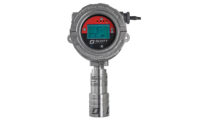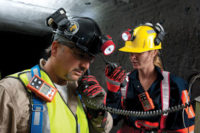Should you even consider open path gas detection?
Possible applications
Monitoring storage vessels, refinery and petrochemical plant perimeters and pipelines are good candidates for an open path system. If your oil, gas or petrochemical facility currently employs eight to ten traditional continuous point gas sensors in a given area, you might want to consider the benefits of an open path system. “Line of sight†technology allows for long distance detection of fuel spills and flammable vapor clouds.Gas leaks that result in a cloud or “plume†will typically be quite concentrated at the leak source, but are diffused and diluted by air currents beyond that source. A series of continuous point sensors installed close together would detect higher concentration gas pockets but pose impracticalities in providing protection across a much larger cross-sectional area.
Conversely, open path systems cannot distinguish between a small, highly concentrated gas cloud and another that is widely diffused and much less concentrated. Thus we have the opportunity of applying several types of gas detection technologies for the best overall coverage.
Integrating open path systems into an existing facility requires understanding of the LEL Meter concept. Traditional catalytic or infrared point combustible gas detectors measure the amount of gas entering the sensor chamber. The sensor then reads and displays the exact concentration in percentage of LEL, or Lower Explosive Limit.
Open path systems express the corresponding combustible gas signal in LEL Meters. One LEL Meter is equivalent to 100 percent LEL over a path length of one meter. Open path beam systems see the average gas concentration within a monitored area. Catalytic and point infrared sensors measure at only one specific point, which must be close to the actual leak source. This condition might greatly delay leak detection. Used together, though, beam and point detection technologies offer a comprehensive and complementary picture.
Other advantages of optical open path systems help to offset the limitations of traditional combustible gas sensors. A full pipeline rupture can cause oxygen to be depleted from its immediate area. Such an event compromises the ability of catalytic sensors to detect combustible gases accurately, as it must “burn†a gas sample to provide a reading. Infrared combustible gas sensors used in open path and continuous point systems do not require oxygen in order to function correctly, nor are they prone to chemical poisoning, as are most catalytic sensors.
Understand the limitations
Both open path and infrared point combustible gas detection systems do have limitations. One is a lack of compatibility with hydrogen. Infrared sensors do not “see†hydrogen, a combustible gas that can build up in confined spaces used for battery charging but lacking adequate ventilation. Additionally, open path systems are just that, as the detector’s view of the gas source must be physically unobstructed.Incorporating open path gas detection into your facility’s safety plan can be cost-effective when installation, ongoing maintenance and training costs are considered. Your long-term cost of ownership might decrease due to significant reductions in the time and cost of maintaining catalytic sensors within an existing monitoring system. Infrared sensors virtually eliminate span drift and the need for routine calibration. Far fewer traditional point gas sensors might be necessary throughout your facility, resulting in a cost reduction to help balance your investment in open path technology.
Open path gas detection systems offer enhanced gas monitoring capabilities that are likely to complement an existing continuous point system. As with all things, technological changes take time and acceptance. Open path technology used in conjunction with traditional point gas detection might ultimately provide the best overall protection as well as a cost-effective means of gas detection.


